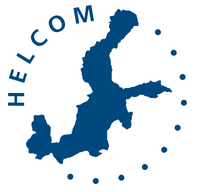Greenlighting key tools and indicators for State of the Baltic Sea report a major topic in HELCOM Heads of Delegation meeting this week High-level segment on ocean-related Sustainable Development Goals to take place on 28 February 2017 Delegations representing all Baltic coastal states as well as the EU this week at HELCOM headquarters to discuss and decide on the best measures for improving the Baltic marine environment. HELCOM holistic assessment 2017, a major discussion point by HELCOM delegates this week, will also rely on the upgraded tools to assess the themes of biodiversity, hazardous substances and eutrophication. Photo: Metsähallitus NHS/Niina Kurikka.The meeting participants will face major decisions required for completing HELCOM State of the Baltic Sea report (), first results due in mid-2017. Draft Recommendations on sewage sludge and conservation of underwater biotopes and habitats are expecting agreement. The 2-day meeting will also discuss the final plans for the HELCOM high-level segment on ocean-related Sustainable Development Goals, taking place on 28 February 2017.The delegates, observers and other stakeholders attending the meeting in Helsinki, Finland will seek final unanimity for few main components of the State of the Baltic Sea report (HOLAS II, full name: Second Holistic Assessment of the Ecosystem Health of the Baltic Sea). The final shape of used for the assessment must now be agreed on. The holistic assessment will also rely on the upgraded tools to assess the themes of biodiversity, hazardous substances and eutrophication, improved since the previous Holistic Assessment of 2010, and two of them are expecting final blessings from the delegations this week.One of the many HELCOM outcomes from the past six months include the thoroughly revised HELCOM Response Manual Vol III to Pollution Incidents on the , which the delegates are invited to endorse. Moreover, an agreement is expected on a regional implementation plan for the IMO Water Management Convention, entering into force globally in September next year. Compilations of pollution load data () have been an integral part of HELCOM assessment system since 1987. The next edition, PLC-7, is expecting approval for being prepared by 2020 and covering the data from 1995 until 2017. HELCOM will host a high-level as a part of its Annual Meeting in the end of February 2017 and the agenda will now be discussed. The session will focus on how to achieve ocean-related UN Sustainable Development Goals (SDG) in the Baltic Sea and progress in addressing the regional environmental challenges. The many aligning targets and goals of the UN and HELCOM are the underlying factor for the session. HELCOM is one of 18 Regional Seas Conventions and Action Plans in the world working together under the umbrella of UNEP and instrumental in the work on SDGs.The 51st Meeting of the Heads of Delegation will be held on 14-15 December 2016 in Helsinki, Finland and chaired by HELCOM Chair Ms Marianne Wenning, DG Environment, European Union. . All documents will be public after the meeting. * * * Note for editors:An update on the overall state of ecosystem health in the Baltic Sea is underway. Improved tools as well as more comprehensive approaches will be applied in the State of the Baltic Sea report (full name: Second Holistic Assessment of Ecosystem Health in the Baltic Sea, ). This major assessment will assist the region’s environmental managers and decision-makers who are to base their work on sound, up-to-date knowledge of the status of the sea. The State of the Baltic Sea report will develop common concepts and methods for the status assessment based on core indicators; create and test the tools for aggregated results and, finally, perform assessments at a regional scale. Importantly, the assessment will also include a socio-economic analysis, about the costs of a deteriorating marine environment, as well as a selection of optimal measures for improving the status of the sea. The first results will be released in mid-2017 and updated during the following 12 months. * * * HELCOM Heads of Delegation, nominated by the to the Helsinki Convention which are the nine Baltic coastal states as well as the EU, usually meet twice a year. The highest decision-making body of HELCOM, Annual Meeting, convenes usually in March. * * * The Baltic Marine Environment Protection Commission, usually referred to as , is an intergovernmental organization of the nine Baltic Sea coastal countries and the European Union working to protect the marine environment of the Baltic Sea from all sources of pollution and to ensure safety of navigation in the region. Since 1974, HELCOM has been the governing body of the ‘Convention on the Protection of the Marine Environment of the Baltic Sea Area’, more commonly known as the Helsinki Convention. * * * For more information, please contact:Johanna Laurila Information Secretary HELCOM Tel: +358 40 523 8988 Skype: helcom70 E-mail: johanna.laurila(at)helcom.fi
Greenlighting key tools and indicators for State of the Baltic Sea report a major issue in HELCOM Heads of Delegation meeting this week.
